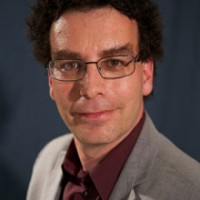
Manuscripts, paintings, sculptures, buildings and recordings can be preserved and archived for future generations. Live theatre, however, is ephemeral. This simple fact creates a tremendous challenge for theatre scholarship and pedagogy. In an effort to compensate for theatre’s evanescence, scholars and theatre artists have exploring a variety of techniques to simulate historical theatre events. The key challenge is to reproduce the viewer’s immersion in the world of the theatre, and the crucial role that the community of spectators plays in constituting a performance event.
I will examine two approaches to simulating live performance using 3D computer animation over the internet. The first is use pre-rendered animations to simulate the experience of watching a performance. The Virtual Vaudeville project exemplifies this approach, letting the viewer switch at will among multiple perspectives on a single nineteenth-century performance. The project also provides a series of hypermedia notes and a real-time flythrough of the theatre. The second approach is to create fully-interactive real-time performances online. I will offer a brief historical overview of such efforts, showing how advances in technology are rapidly making online performance feasible. In particular, I will focus on the tremendous potential — and serious limitations — of Second Life as a venue for virtual performance. Moreover, I will argue that the phenomenon of live performance in Second Life raises fundamental questions about very notion of liveness.
David Z. Saltz (PhD, Stanford) is head of the Department of Theatre and Film Studies at the University of Georgia, He currently serves as editor of Theatre Journal. His primary research focus is the interaction between live performance and digital media. He is Principal Investigator of Virtual Vaudeville, a large-scale research project that was funded by the National Science Foundation to simulate a nineteenth century vaudeville performance on the computer. He has also explored the use of computer technology extensively in his work as a director and teacher. Along those lines he established the Interactive Performance Laboratory at UGA, has directed a series of productions incorporating real-time interactive digital media, and has created interactive sculptural installations that have been exhibited nationally. He has published 20 articles in scholarly journals and books, and is coeditor (with David Krasner) of the book Staging Philosophy: Intersections between Theatre, Performance and Philosophy (University of Michigan Press, 2006).
A continuously updated schedule of talks is also available on the Digital Dialogues webpage.
Unable to attend the events in person? Archived podcasts can be found on the MITH website, and you can follow our Digital Dialogues Twitter account @digdialog as well as the Twitter hashtag #mithdd to keep up with live tweets from our sessions. Viewers can watch the live stream as well.
All talks free and open to the public. Attendees are welcome to bring their own lunches.
Contact: MITH (mith.umd.edu, mith@umd.edu, 301.405.8927).
